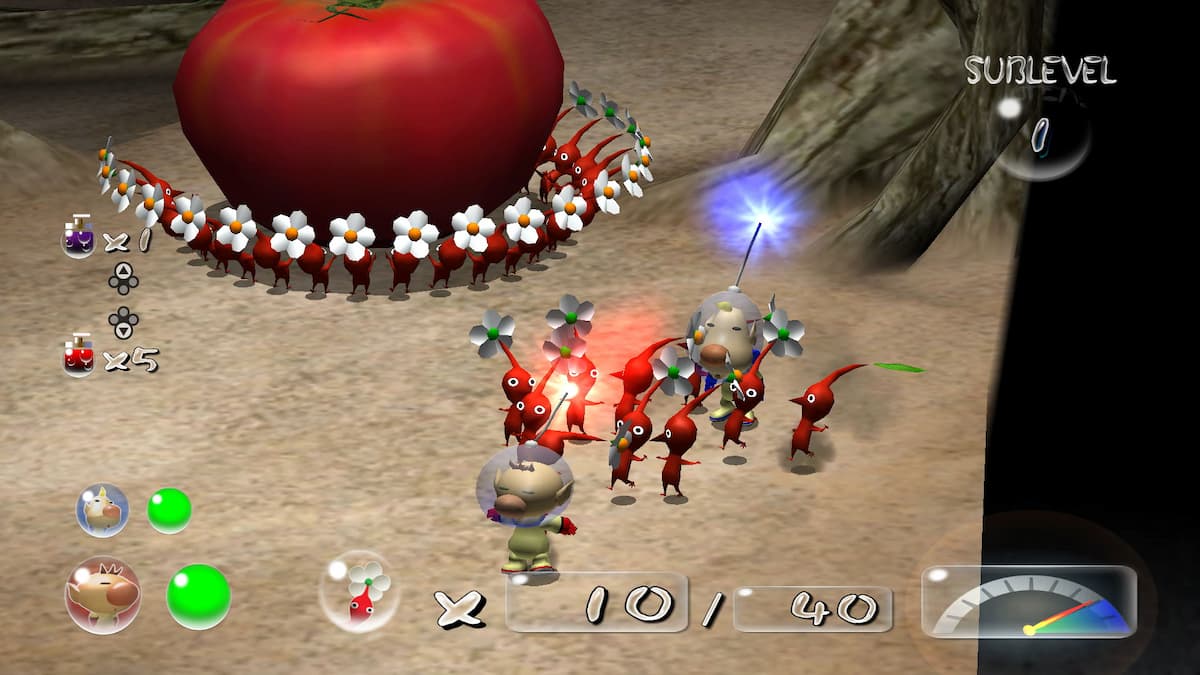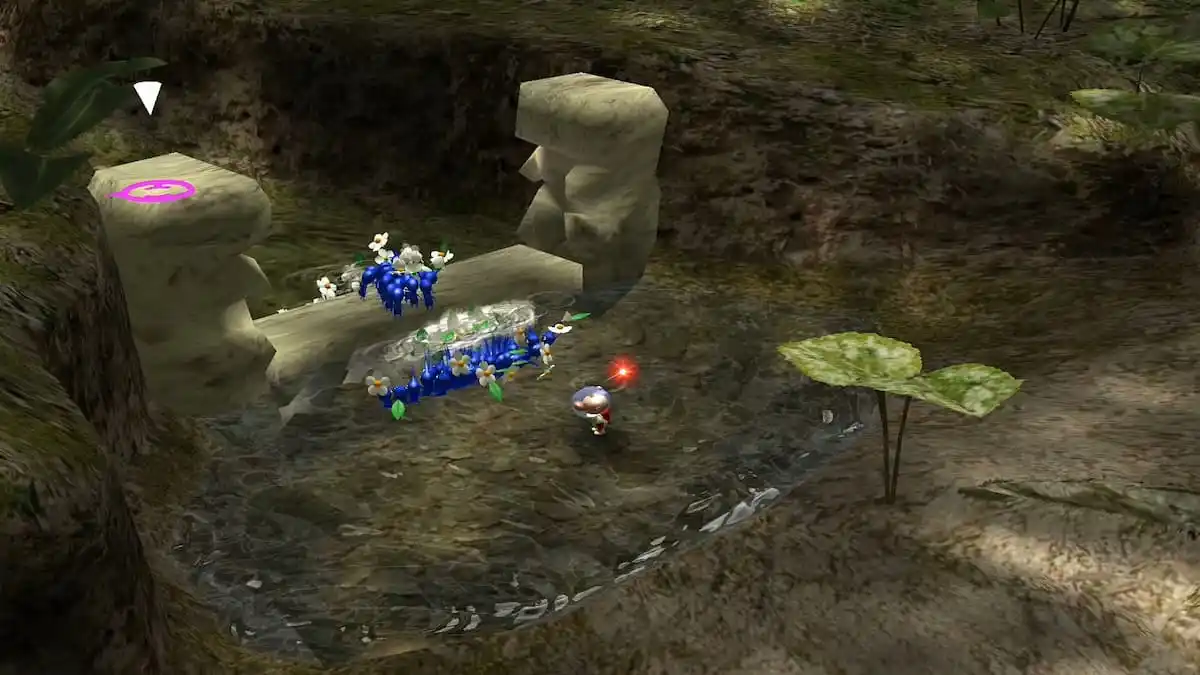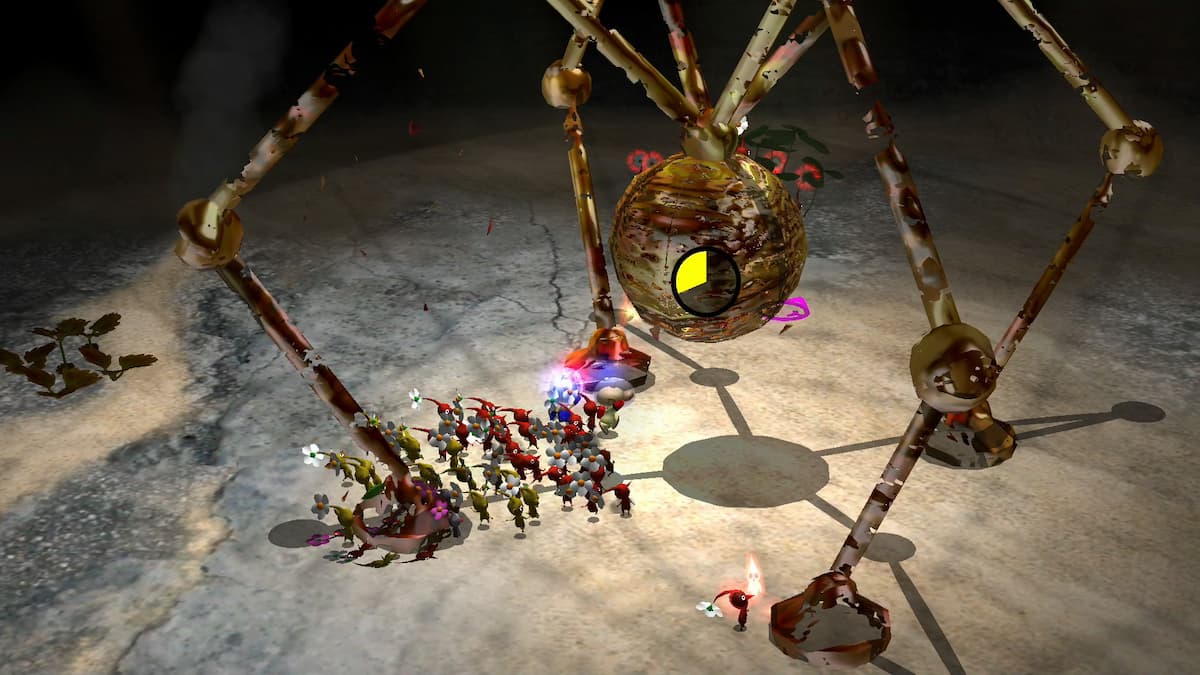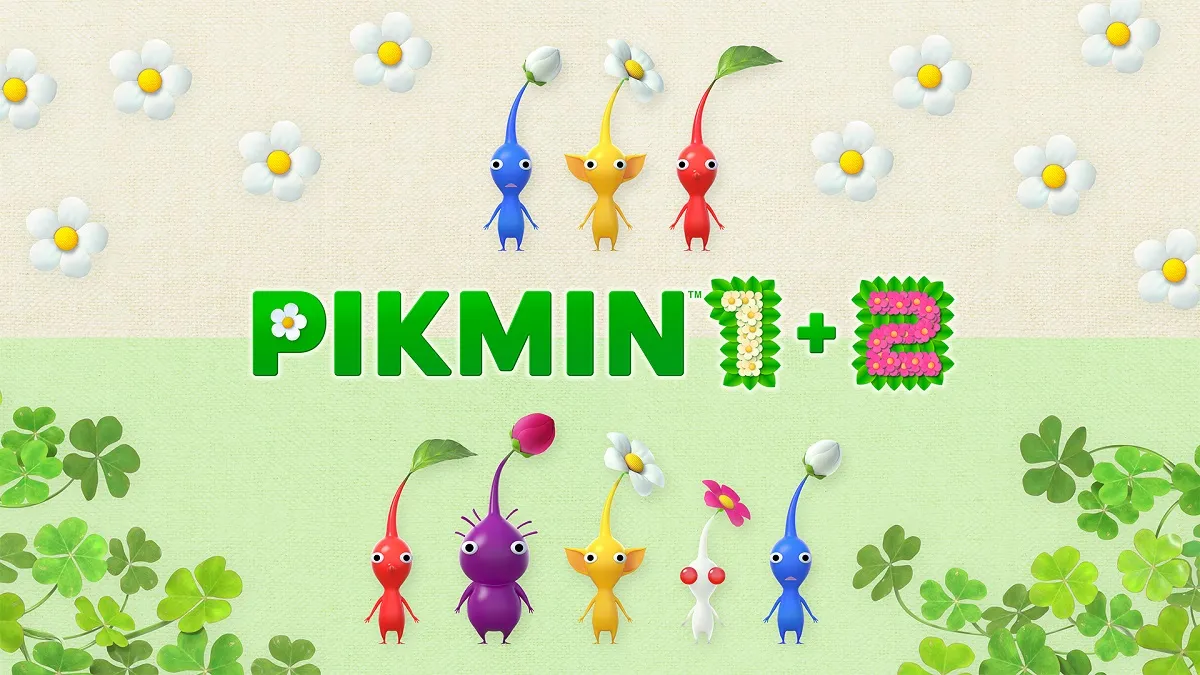Ah, re-releases. Hot off the heels of another, equally nostalgic outing via the We Love Katamari remaster, Nintendo deigned to bless our Switches with the ability to play every single mainline Pikmin game in one place. Pikmin 1 + 2 is a simple offering: both games, in HD, for the price of $49.99, or either one for $29.99. It’s a bit of a steep price all things considered, but the more important question is how do these games hold up?
Pikmin 1 is old, but Pikmin 1 is also good. It’s certainly the easier, breezier offering between these two games, but it’s also a good introduction to the series simply because of how… simple it is. There are only three types of Pikmin: red, yellow, and blue. They all have very simple abilities, and the only real difficulty comes from the strictly-imposed 30-day time limit on completing the game.
Starting with the obvious, Pikmin 1 is old. Like, 22 years old. Like it or not, the GameCube is now a retro console, and we’re just going to have to accept that the passage of time will ceaselessly march forward, dulling once-fond memories and eroding the monuments of man in its wake. Sorry, what was I talking about?

For those who don’t know, Pikmin 1 takes place over the course of “days:” about 15-minute increments that progress in real-time. During each day you’ll explore any one of the game’s several areas, shepherding your Pikmin about and collecting pieces of protagonist Captain Olimar’s broken ship so he can journey home. When night falls, the creatures become aggressive and devour any Pikmin left behind on the planet’s surface, so it’s a mad dash to wrap things up in a timely fashion.
The game’s time limit is pretty forgiving — I finished in about 17 days. Gathering two or more ship parts is a pretty simple task, and the enemies in Pikmin 1 take days to respawn, so when you’ve cleared out an area it’s ripe for the picking.
The only real annoyances with the first game come from its age. Pikmin are liable to get stuck, fall off bridges, trip and fall (this is intended, but still annoying), and generally just behave more independently than they should in a game with such a focus on precision. You could argue it’s charming, but when a yellow Pikmin holding a bomb decides anything for itself, you’ll change your tune pretty quickly.
Pikmin 2 is, by all accounts, the superior of the two games. It has more content, far more variety, and the ability to control each of its two captains independently allows for some much-desired multitasking. There’s no day limit in Pikmin 2, but days still behave similarly with the exception of time standing still when you’re exploring one of its many dungeon-like caves.

The basics of both games are the same, more or less. You’ll gather your Pikmin from their ships, and toss them at various enemies and objects to order them to carry them back to base — either as treasure or to be turned into Pikmin fodder like some kind of Soylent Green.
The highlight, for me, anyway, is trying to make “the most” of any given day. Landing on a planet and taking a look at the map helps plan things out, but anything can go wrong. Luckily, restarting from the beginning of the day is an easy way to try things again. Pikmin 1 especially, where your in-game days are limited, started to feel like attempting to master an RTS game; I was plotting courses and routes and always thinking of what I needed to do tomorrow as I went along.
Pikmin 2‘s lack of a day limit is more of a blessing than a curse, as you can take your time a bit more to grow up some extra buds and really scope things out. It’s welcome, too, since the enemies and bosses are much more difficult than in the first game (thanks in no small part to the increased variety).
The controls can be a bit of a fuss sometimes, since throwing Pikmin relies on a cursor controlled with the same stick you’ll use to move around. There are some half-hearted motion controls, but they only activate when you’re holding down the button to throw a Pikmin, making them feel a bit stilted. I opted to just use the stick and found myself gaining proficiency pretty quickly at landing my little dudes right on top of enemies.

Bosses are another story. Nothing looms quite as terrifyingly in a videogame as an empty, extremely obvious boss arena in a Pikmin game. They welcome you to walk right in and find out if a hundred tiny lives will be crushed from above, consumed from below, or otherwise snuffed out by some malformed abomination. These are my favorite parts, if not for the manic strategizing required then for the exhilarating anticipation of encountering them.
But the best part of Pikmin 1 + 2 is simply the vibes. The music is whimsical and very unique, featuring instrumentation of woodwinds and synths that are somber and nostalgic (though that could be the actual nostalgia talking). The graphics are a little crunchy, but they look far more pleasant than I expected when blown up on my 55″ television. The games have a calming atmosphere, even when things are going wrong.
So yes, the games hold up. Are they worth your 50 bucks? That’s a little harder to say. Like I said, it’s a steep price to pay for a pair of 20-year-old games without many modern niceties added on, but they’re classics for a reason, and it certainly is nice having them all in one place. Replayability is high, and these are one of the biggest swings Nintendo ever took with a new IP. Just think of how out there these must have been all those years ago — from the company that brought you Mario comes a game where you’re commanding a legion of sentient plants on an abandoned version of Earth. Pikmin 1 + 2 are just as bold as when they first released, and it’s a better time than ever to give them a go. Just watch out for sheargrubs.
This review is based on the Nintendo Switch version of the game. A code was provided for review by Nintendo.






